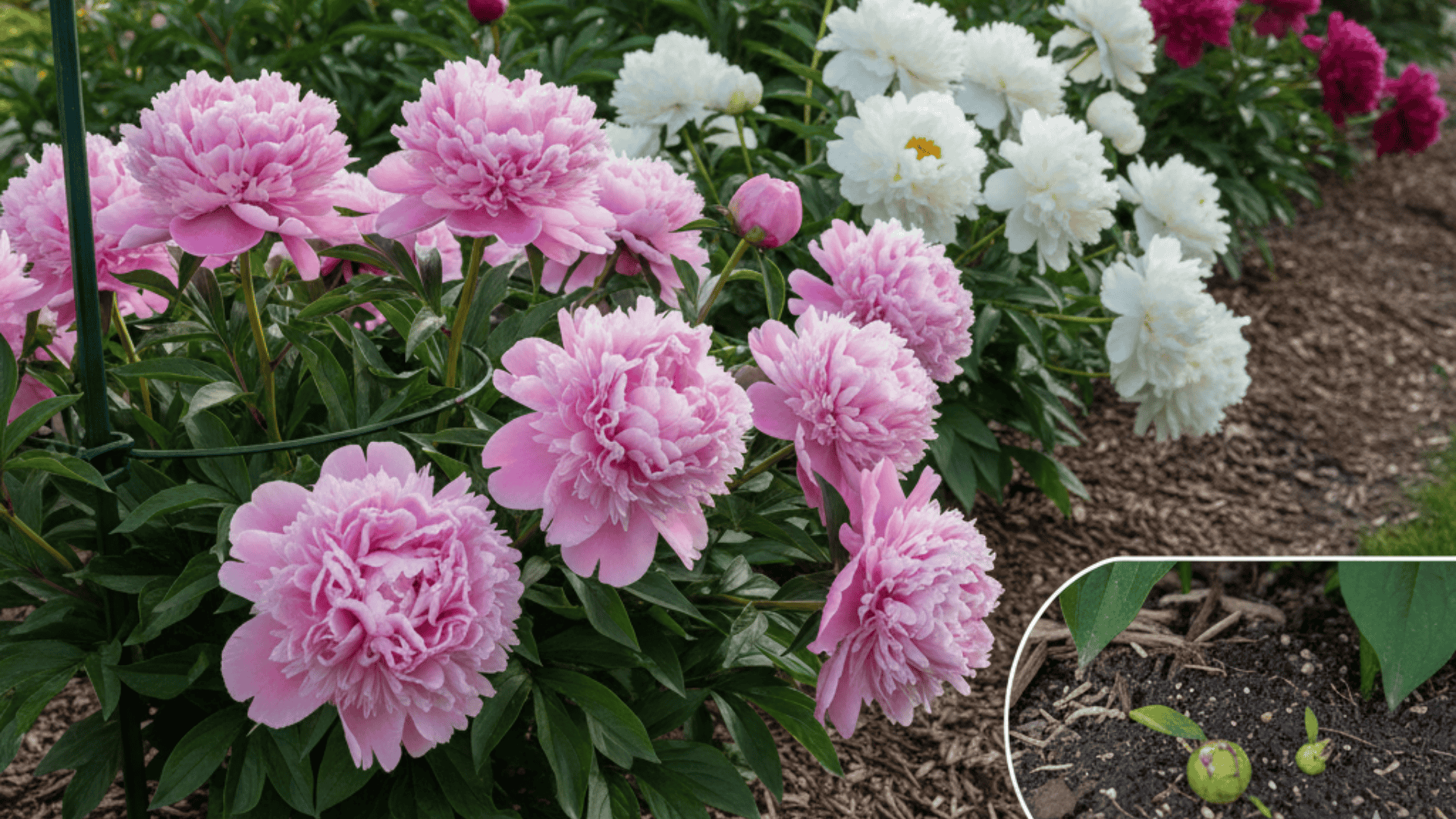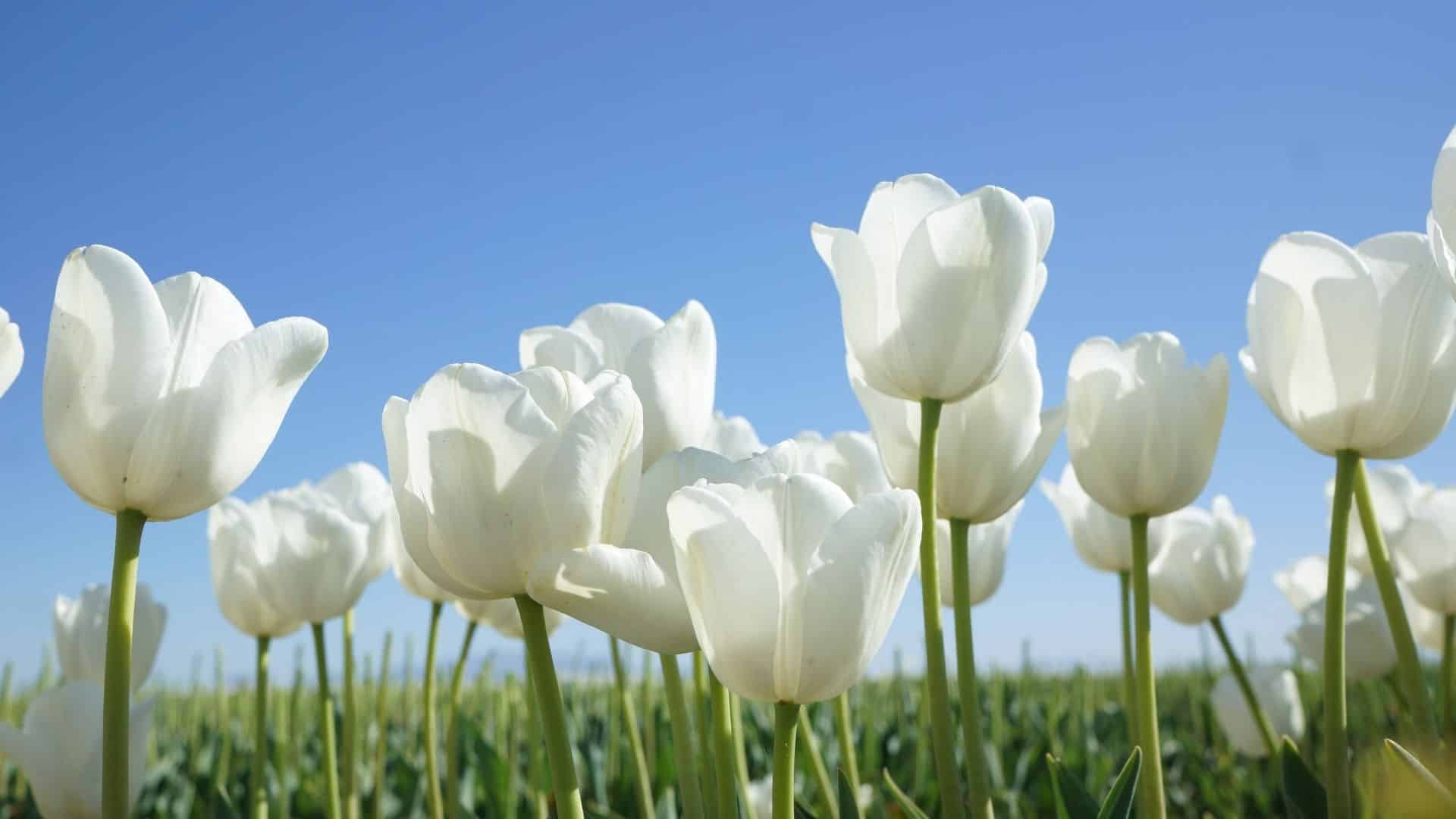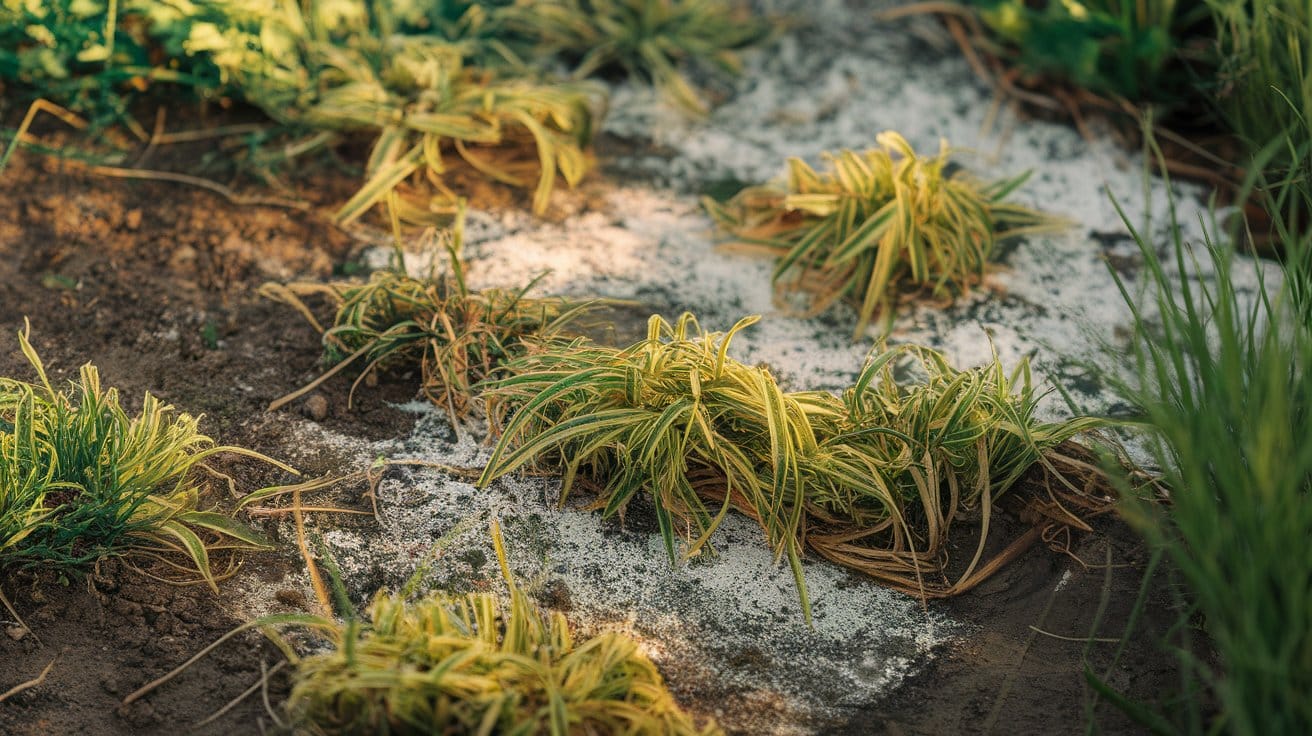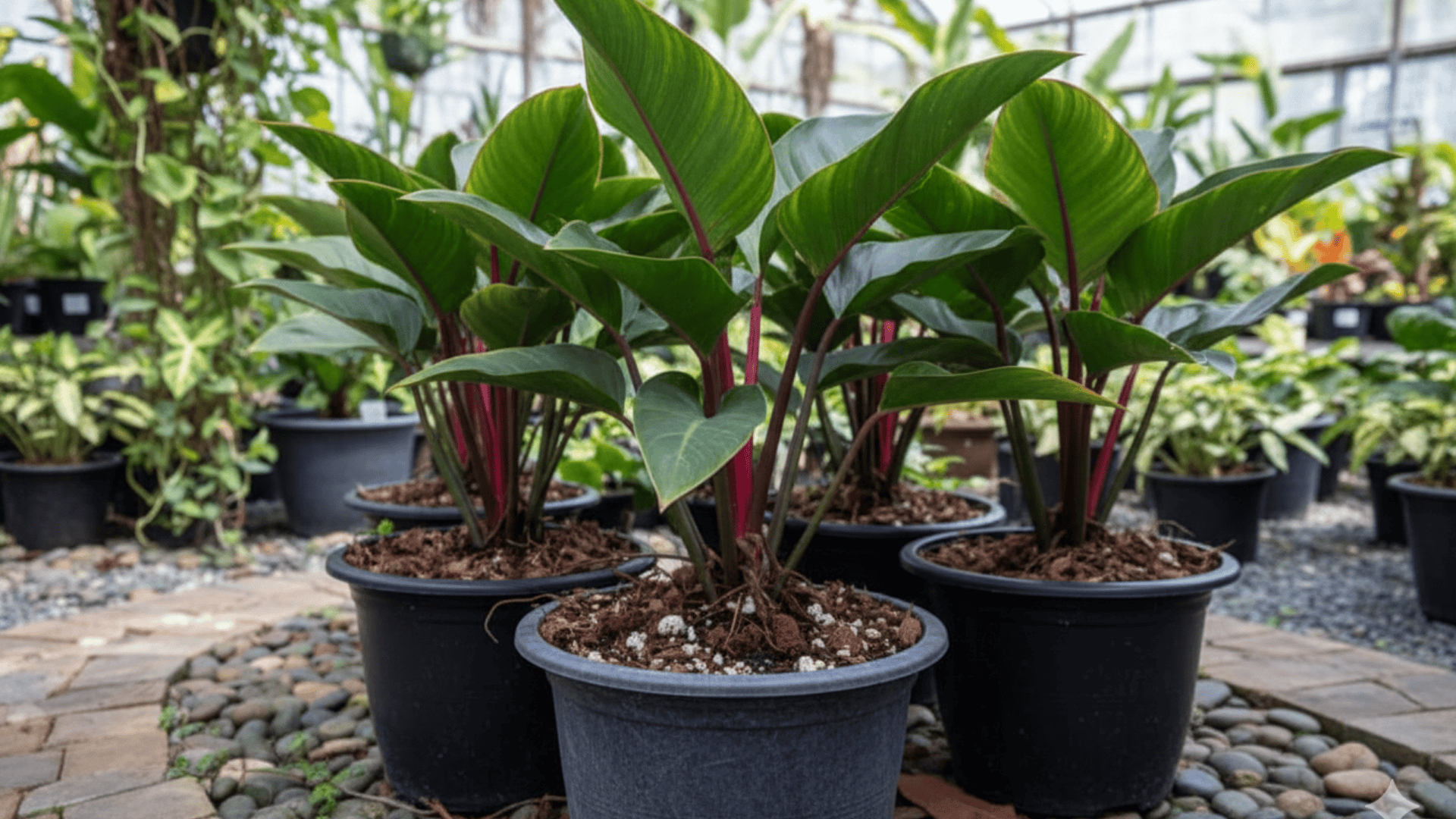What is Wisteria?
Wisteria vines belong to the legume family and are known for their woody stems, compound leaves, and drooping flower clusters called racemes.
These strong climbing plants can live for decades, changing gardens with dramatic spring displays on pergolas, arbors, and fences.
As members of the pea family, wisteria plants fix nitrogen in the soil, benefiting surrounding plants.
Their ability to create stunning vertical displays makes them prized additions to landscape designs across the United States.
Common Types of Wisteria
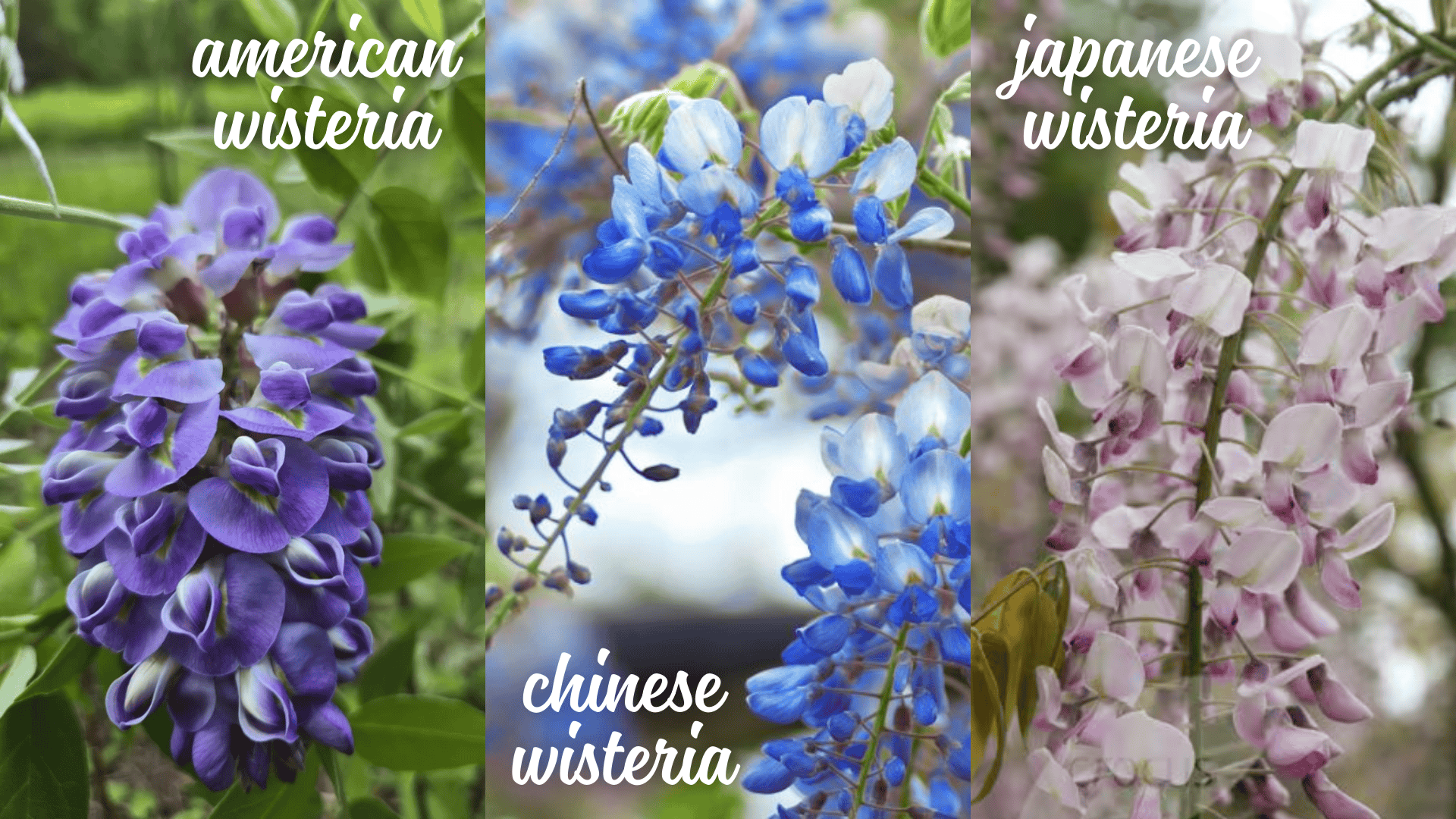
The most common types of wisteria grown in American gardens include:
1. American Wisteria (Wisteria Frutescens)
A native species with moderate growth, shorter flower clusters, and non-invasive characteristics.
It typically reaches 20-30 feet and thrives in USDA zones 5-9.
This species often produces a second bloom in summer and requires minimal maintenance.
2. Chinese Wisteria (Wisteria Sinensis)
An Asian species featuring long, fragrant flower clusters and aggressive growth habits.
It can grow 50+ feet with powerful stems that require sturdy support structures.
The blooms appear before leaves in early spring, creating spectacular displays.
3. Japanese Wisteria (Wisteria Floribunda)
Known for extremely long flower clusters and a clockwise twining growth pattern.
The flower racemes can extend 12-18 inches or more in some varieties.
It blooms slightly later than Chinese wisteria and offers excellent fragrance.
Each species offers unique characteristics in terms of growth habits, flower presentation, and maintenance requirements.
Key Differences Between American and Chinese Wisteria
Understanding the distinctions between these species helps gardeners select the right variety for their specific needs and growing conditions.
1. Flowers
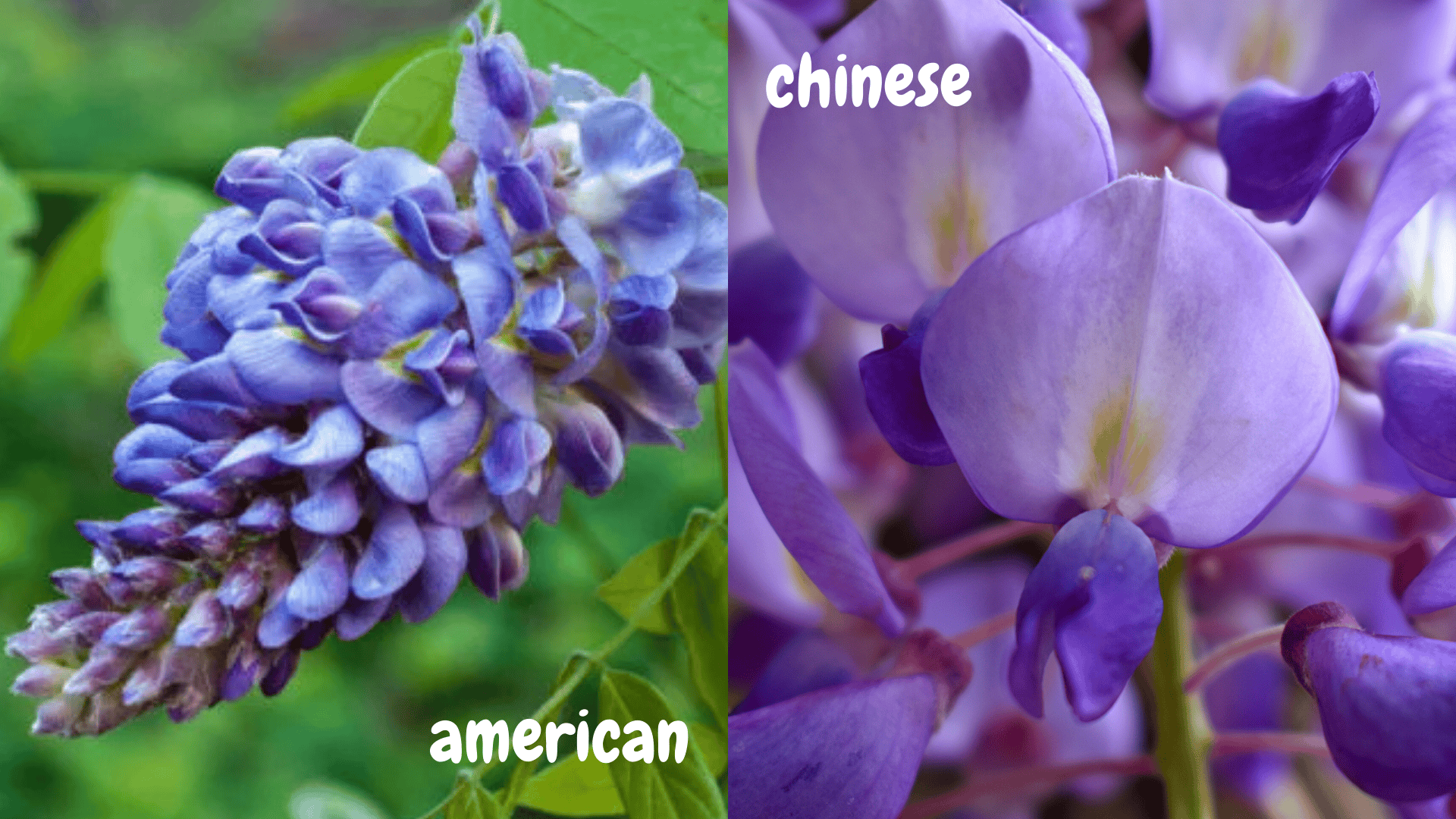
American wisteria often provides a second flush of flowers in mid-summer, extending the blooming season beyond the initial spring display.
Chinese wisteria blooms appear before leaves emerge, creating a more dramatic early spring spectacle when branches are bare.
2. Growth Habits

American wisteria features thin stems, making it ideal for pergolas and arbors, which require lighter support structures.
Chinese wisteria develops thick, powerful stems that can damage weak structures over time, requiring robust support systems.
3. Leaves
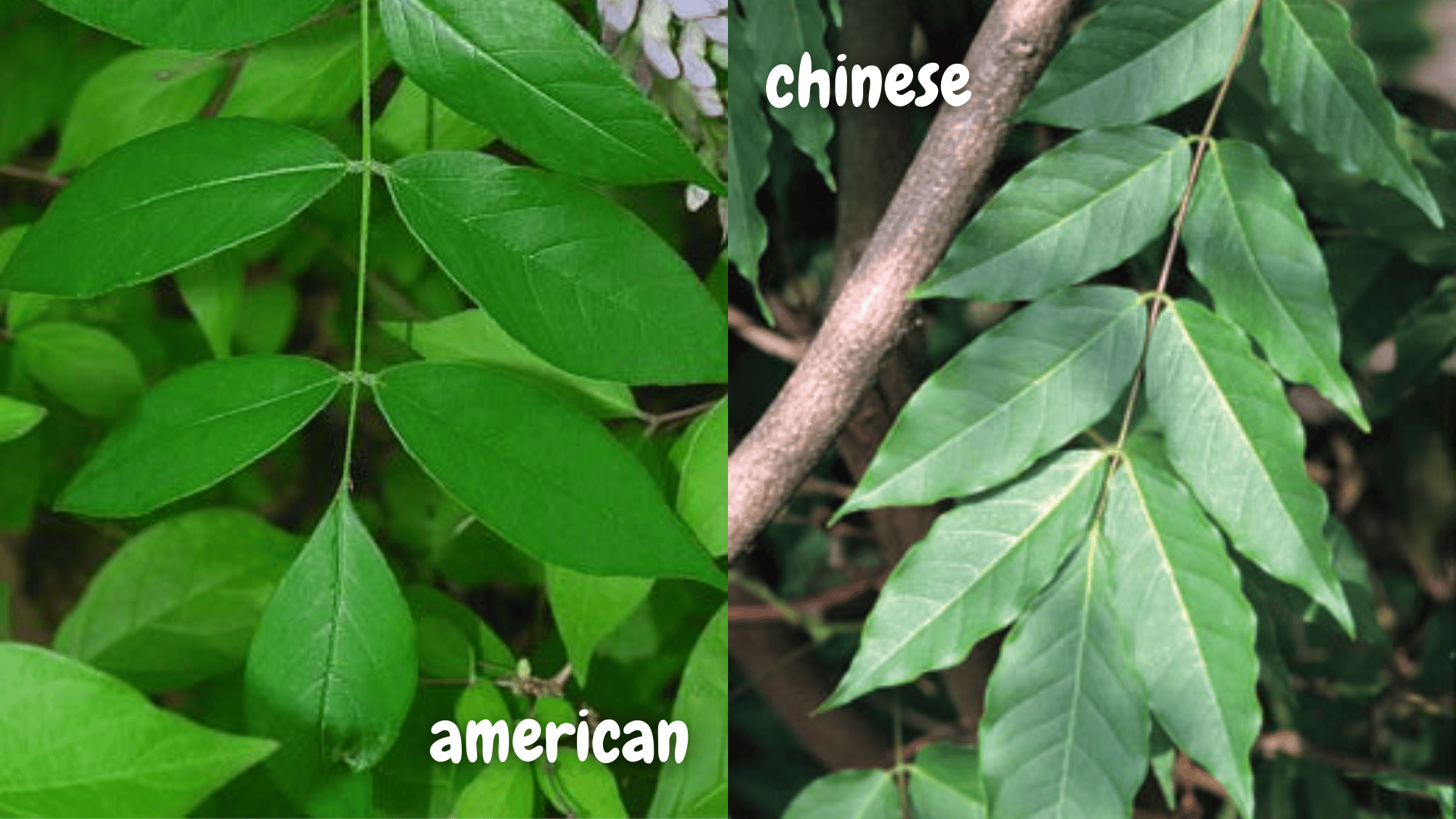
American wisteria foliage emerges after flowering and maintains a clean, tidy appearance throughout the growing season.
Chinese wisteria creates a denser, coarser canopy that may appear less refined compared to the native species.
4. Identification Tips

American wisteria climbs clockwise with blooms appearing alongside leaves, typically featuring shorter flower clusters and thinner stems.
Chinese wisteria climbs counterclockwise with blooms appearing before leaves emerge, featuring longer flower clusters and thicker stems.
The following table provides a quick reference for the key characteristics that distinguish American and Chinese wisteria:
| Feature | American Wisteria | Chinese Wisteria |
|---|---|---|
| Flower Length | 4-6 inches | 8-12 inches |
| Bloom Time | Late spring/early summer | Early spring |
| Fragrance | Mild | Strong |
| Growth Rate | Moderate | Aggressive |
| Mature Size | 20-30 feet | 50-60+ feet |
| Twining Direction | Clockwise | Counterclockwise |
| Leaflets | 9-15, smaller | 7-13, larger |
| USDA Zones | 5-9 | 5-8 |
| Maintenance | Lower | Higher |
| Invasiveness | Non-invasive | Can be invasive |
Choosing the Right Wisteria for Your Garden
The best wisteria for your garden depends on your specific needs and growing conditions.
Choose American Wisteria if you:
- Have limited garden space or smaller structures.
- Want low-maintenance, non-invasive plants.
- Live in USDA zones 5-9.
- Prefer extended blooming with summer reblooms.
- Need lighter support structures, like wooden pergolas.
Choose Chinese Wisteria if you:
- Have large garden spaces with room for aggressive growth.
- Want dramatic, early spring flower displays.
- Have sturdy support structures (steel or heavy timber).
- Don’t mind regular pruning and maintenance.
- Live in USDA zones 5-8.
Most home gardeners should choose American wisteria for its manageable size and low maintenance, while large properties with sturdy supports can handle Chinese wisteria‘s dramatic displays and aggressive growth.
Tips for Growing Wisteria Successfully
Both American and Chinese wisteria require similar care, though maintenance needs may vary based on the species’ growth habits.
- Location and Soil: Choose a sunny spot with well-draining, slightly acidic to neutral soil (pH 6.0-7.0). Avoid overly fertile soil, which promotes leaves over flowers.
- Planting: Plant in early spring or fall, digging a hole twice as wide as the root ball. Water thoroughly and apply 2-3 inches of mulch.
- Support Structures: Install strong supports before planting, using steel or heavy timber. Avoid attaching to house siding or gutters.
- Training and Pruning: Prune twice yearly – summer after flowering and late winter for shaping. Regular pruning encourages blooming and controls size.
- Watering and Fertilizing: Water deeply but infrequently once established. Use minimal, low-nitrogen fertilizer in early spring only.
- Common Problems: Watch for aphids, scale, and spider mites. Treat with horticultural oil. Ensure good air circulation to prevent fungal diseases.
Conclusion
American wisteria suits smaller gardens with its manageable growth and lower maintenance, while Chinese wisteria creates dramatic displays but requires more space and care.
Consider your climate zone, available space, and maintenance preferences when choosing between these species.
For region-specific advice, consult local nurseries or extension offices to ensure successful cultivation in your area.
Which wisteria variety are you considering for your garden?
Share your thoughts and experiences in the comments below!
Frequently Asked Questions
Can American and Chinese Wisteria Crossbreed?
Natural crossbreeding is extremely rare due to different blooming times and genetic compatibility issues. Most hybrid varieties are created through controlled breeding programs.
Which Type of Wisteria Is More Invasive?
Chinese wisteria is significantly more invasive and can escape cultivation to displace native plants. American wisteria poses no invasive threat to local ecosystems.
How Long Does It Take for Each Wisteria Type to Bloom?
American wisteria typically begins blooming 2-3 years after planting, while Chinese wisteria may take 3-5 years, sometimes longer if grown from seed.





